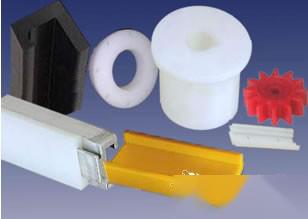

Ultra High Molecular Weight Polyethylene Board extrusion molding process used to involve single-screw and twin-screw extruders in the past. However, with advancements in science and technology, we have transitioned to using low compression ratio single-screw extrusion processes and equipment to mold various shapes of extruded products. Typically, this process for ultra high molecular weight polyethylene boards can produce materials suitable for machining, customized profiles, guide rails for conveyor lines, movable parts for ski rails, cable sheaths for automobiles, joints, and linings for fluid transport pipes.
Ultra High Molecular Weight Polyethylene Board is utilized in the paper and wastewater treatment industries for bearings, dewatering base plates, sliding rails, and filtration devices. Electrolytic cell diaphragms are made from porous high molecular polyethylene boards, demonstrating the material's excellent corrosion resistance. High-strength high molecular polyethylene fiber is a newly developed material currently under development. This fiber is used in competitive sailing boats, where the material is required to have comprehensive performance characteristics, such as being lightweight, mold-resistant, and ensuring dimensional stability of the manufactured parts. This fiber is also used as a reinforcing material in composite structures.
The wear resistance of ultra high molecular weight polyethylene boards is the highest among plastics and exceeds that of certain metals. Compared to other engineering plastics, the sand abrasion index of high molecular polyethylene boards is only 1/5 of PA66 and 1/10 of HEPE and PVC; compared to metals, it is 1/7 of carbon steel and 1/27 of brass. Such high wear resistance makes it difficult to test its wear resistance using conventional plastic wear testing methods, which is why a specialized sand abrasion testing device has been designed.













